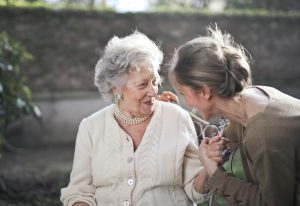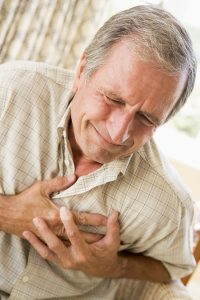10 Things to Consider Before Moving to a Care Home
A care home makes up for one of the best places to access assisted living services. There are many such services in the country, making it difficult to choose the right one. You have to consider many unique factors to ensure you choose the ideal service provider. Fortunately, this guide looks at ten things to consider before moving to a care home:
1. The Pricing Packages
A care home offers services at a cost, and you have to be aware of their pricing plans. Usually, each pricing plan comes with different offers and levels of assisted living benefits. Reviewing these plans will help you make an informed decision for your care home needs. You can request information such as the average cost of assisted living by calling the care home or vising their website. Ensure you ask all relevant questions about each pricing plan before investing.
2. Online Presence
A good assisted living service is available online because nowadays, the average person uses the internet to search for solutions. The service should be available on social media, a website, or any other internet-based platform. A simple search engine query should help expose all the relevant care homes in your location. The ones that come up high in the search results are usually the most reputable.
3. Location
Logistics is a crucial factor when choosing the ideal care home. People have different location needs, and you have to consider this in choosing the ideal home. Some prefer homes that are in urban areas, while others prefer those that are in reserved locations. The location also helps determine whether you have chosen a reputable service because unprofessional people tend to work in remote areas.
4. Regulatory Approval
A care home should run as a state-recognized and approved business entity. Usually, the evidence of this approval is available on the business’s website or product portfolio. Or, it can also be available through local state databases or records. The approval helps to show that you have chosen a professional service.
5. Medical Services Offered
People in care homes sometimes need various types of medical services. A good care home can address these needs and suits the need of different patients. Medical services can include prescription management, mental health initiatives, and more. You also have to determine whether the home has the licensing to offer such services.
6. Enhanced Assisted Living
Enhanced assisted living refers to the various technologies a care home offers to patients with special needs. A good example would be assistive devices that help deaf patients or those with memory loss. The devices help these individuals to navigate everyday obligations conveniently. While such resources are likely to increase the cost of medical care, they are crucial for assisted living purposes.
7. Team of Staff
The team of staff available at the care home is also crucial for the assistive living services they can provide. Ensure you have a broad perspective of each team member before settling on a specific service provider. Doing this will help increase the likelihood of receiving high-quality medical health attention or help. It also helps ensure that the facility well addresses each patient’s needs.
8. Offers and Incentives
The quality of incentives the care home provides is also crucial for the medical services to its patients. The offers and incentives should be transparent and suitable for patients with long-term needs. The reason is that most care home patients are patients who will live in the facility for long durations. The offers can include discounts and privileges such as vacations for loyal clients.
9. Affiliations
You should also consider a care home with excellent affiliations with entities such as medical facilities. The reason is that it helps guarantee the likelihood that you will receive high-quality care home services. The affiliations can include those that exist with traditional medical services.
10. Social Support Programs
The ideal care home also has excellent social support programs for its patients. The programs should include recreational, physical, and other forms of outdoor activity. It should also include custom programs for people that have specific care needs.
Conclusion
As you have noticed, there is more to receiving medical care than the average person can expect. You must consider various factors and details to ensure you get the best service provider.
Constipation Treatment
Background
Constipation is the most common bowel problem in older adults. The definition varies by patients and health care providers, but generally it means less frequent bowel movements than usual, and those which are hard, dry, and difficult to pass. Constipation is a preventable and treatable problem. Changes that occur with normal aging, such as peristalsis in the gut slowing down or decreased physical activity, predispose older persons to constipation.
Risk Factors/Warning Signs
Constipation is often due to a combination of causes. Some of the risk factors include decreased activity, medications (such as certain pain pills, iron supplements, and calcium supplements), depression, neurological conditions (dementia, Parkinson’s disease, stroke, diabetes mellitus, and spinal cord injury), dehydration, low dietary fiber, metabolic disturbances (such as hypothyroidism), undergoing dialysis, obstruction, and decreased access to the toilet (Halter et al., 2009). The range of “normal” for bowel movements is three times per day to three times per week. A decrease in number of stools that is “normal” for the person and the occurrence of hard, dry stools that are difficult to expel are typical signs of constipation.
Diagnosis
If constipation is severe enough for the person to seek medical care, the patient may complain of abdominal pain and even have symptoms similar to other problems such as an appendicitis or diverticulitis. These more serious ailments can be ruled out through x-rays, CT scan or MRI. The diagnosis is based on clinical presentation, history, and physical examination. It is important to determine the onset and duration of the constipation, along with functional and nutritional status.
Treatments
Before starting a bowel program to prevent constipation, the existing problem should be dealt with. A physician may prescribe laxatives, suppositories, and/or enemas to get the stool moving and eliminated. Many such products can be obtained over the counter as home remedies, but severe and recurrent problems should be referred to the primary care provider for further examination of the cause. After starting with a clean bowel, interventions should focus on lifestyle and dietary modifications. All natural means should be tried first before adding medication to the regimen. This includes regular exercise, establishment of a regular routine for toileting (assure privacy), and encouragement of a high-fiber diet with adequate fluid intake (unless contraindicated)(Joanna Briggs Institute, 2008). Medications may be considered for those who do not respond to lifestyle changes. Residents of nursing homes appear to respond to stimulant laxatives (e.g., senna, bisacodyl) or Miralax. Enemas should not be used on a regular basis because they promote lazy bowel function. Most older persons can avoid constipation if they remain active, have proper nutrition high in fiber, and drink plenty of fluids.
Adapted from Mauk, K. L., Hanson, P., & Hain, D. (2014). Review of the management of common illnesses, diseases, or health conditions. In K. L. Mauk’s (Ed.) Gerontological Nursing: Competencies for Care. Sudbury, MA: Jones and Bartlett Publishers. Used with permission.
http://www.mayoclinic.com/
Peripheral Artery Disease
Background
Peripheral artery disease (PAD), the most common type of peripheral vascular disease (PVD), affects 8–12 million Americans, 12–20% of those over the age of 65, and could reach as many as 9.6 million Americans by the year 2050 (Cleveland Clinic, 2012).
Risk Factors/Warning Signs
The risk factors for PAD are the same as those for coronary heart disease (CHD), with diabetes and smoking being the greatest risk factors (AHA, 2005). Ac¬cord¬ing to the American Heart Association, only 25% of those older adults with PAD get treatment. PAD increases the risk of CHD, heart attack, and stroke.
Diagnosis
The most common symptoms of PAD are leg cramps that worsen when climbing stairs or walking, but dissipate with rest, commonly called intermittent claudication (IC). The majority of persons with PAD have no symptoms (AHA, 2005). PAD is a predictor of CHD and makes a person more at risk for heart attack and stroke. Left untreated, PAD may eventually lead to impaired function and decreased quality of life, even when no leg symptoms are present. In the most serious cases, PAD can lead to gangrene and amputation of a lower extremity.
Treatments
Most cases of PAD can be managed with lifestyle modifications such as those for heart-healthy living. This includes maintaining an appropriate weight, limiting salt intake, managing stress, engaging in physical activity as prescribed, quitting smoking, and eating a heart-healthy diet.
Patients with PAD should discuss their symptoms with both their healthcare provider and a physical therapist, because some patients find symptom relief through a combination of medical and therapy treatments (Aronow, 2007; Cleveland Clinic, 2012).
Adapted from Mauk, K. L., Hanson, P., & Hain, D. (2014). Review of the management of common illnesses, diseases, or health conditions. In K. L. Mauk’s (Ed.) Gerontological Nursing: Competencies for Care. Sudbury, MA: Jones and Bartlett Publishers. Used with permission.
www.nhlbi.nih.gov/health/health-topics/topics/pad/



